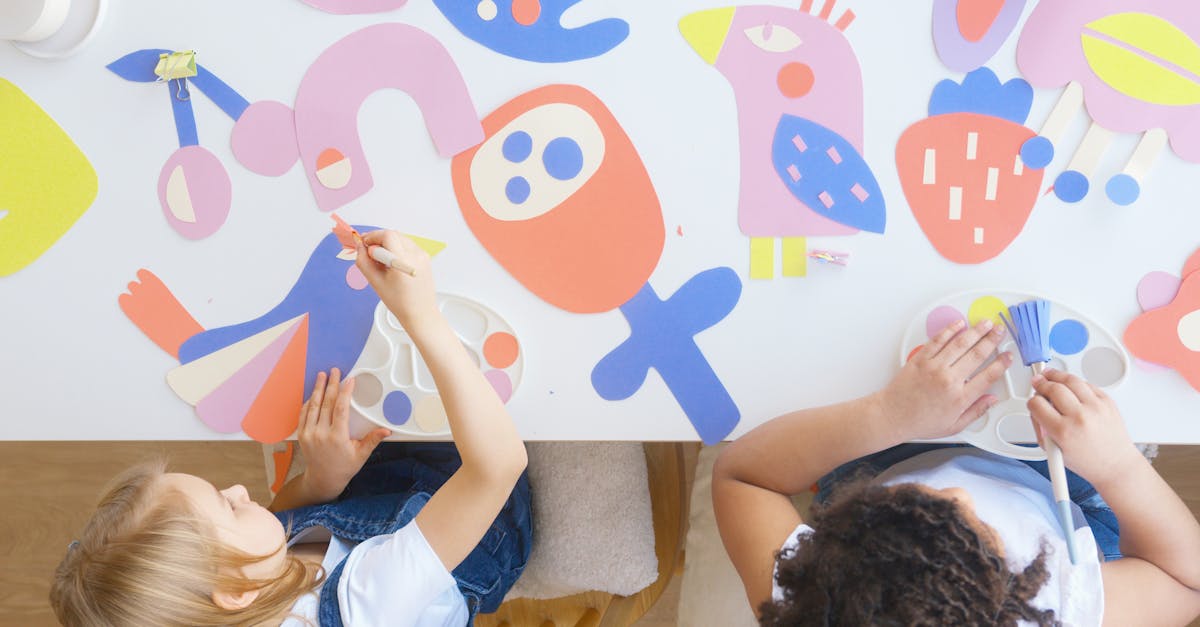Getting Hands-On with Love
Getting hands-on with creative projects captivates children’s attention—and teaches them important messages. When introducing the concept of God’s love to pre-schoolers, using art can make abstract ideas feel tangible.
Creating a ‘Love Tree’
Imagine the joy of creating a ‘love tree’ where each leaf represents an act of kindness. Kids can put their thumbprints on paper, and you can help them form a tree. As you guide them, talk about how each print is unique and important, just like each of them.
Simultaneously, sprinkle in conversations about how God’s love is both personal and encompassing—like our growing tree. Speaking from experience, one of the funniest moments is when my son decided our love tree needed a fruit of ‘silly oranges’ because ‘laughing is sweet!’

The Colors of Kindness
Colors can communicate powerful emotions, much like the hues in a painter’s palette. In this activity, encourage kids to create their own ‘Kindness Colors’ paintings. Ask them what colors they associate with love, joy, and kindness.
- Red: Warmth
- Yellow: Happiness
These connections help children see God’s love in everyday life. Watching my daughter decide that ‘purple is Grandma’s love because it feels cuddly’ was delightful!
Allowing them the freedom to choose colors teaches creativity while embedding emotional significance in their learning process. Through the swirling patterns and vibrant colors, they build a colorful connection to divine love.

Drawing Inspiration from Stories
Using stories as a catalyst for art is a wonderful way to link narratives to visual creativity. Tell a simple story of God’s love, like the parable of the lost sheep, and then let their imaginations roam free as they draw their interpretation. Discussing the story helps children grasp abstract ideas, while the drawing lets them express those ideas visually.
Encourage them by saying, ‘What do you think the sheep felt when it was found?’ Tapping into their sense of empathy enhances both artistic expression and comprehension. My daughter once depicted a sheep in a rainbow field because, according to her, ‘it was a very happy day!’ Such insights become memorable learning milestones.

Laughs and Love in the Mess
Art, by nature, can get messy—but isn’t life a bit chaotic too? Embrace the mess and use it as a teaching moment. Love can sometimes mean getting your hands dirty—literally!
Let your child’s creativity flow with splatter painting, representing the playful side of God’s love. It’s like finger painting, but with the intention of crafting universal beauty from ‘organized chaos’.
While scrubbing up the paint afterwards, we laughed about how God’s love can clean even the messiest spills. Our little cleanup moments feature plenty of giggles and opportunities to talk about understanding and forgiveness in a light-hearted way.

Key Takeaways:
- Embrace the messiness of life as a teaching opportunity.
- Engage in creative activities that highlight the joy of art.
- Use laughter during cleanup to discuss deeper themes like understanding and forgiveness.
Share the Love, Share the Art
Encourage kids to spread love through their creations by sharing their artwork with others. Organize a mini art exhibit at home where they can show off their drawings of love and kindness to family and friends. This not only boosts their confidence but also ingrains the joy of sharing—a critical piece of living God’s love.
Witnessing the pride in my son’s eyes as he showcased his ‘love zoo’ to grandma was unforgettable. As they interact with the viewers, prompt them to talk about their artwork—‘What makes this picture special?’ Such exhibitions likewise teach them about giving, receiving, and celebrating communal love.

Benefits of Sharing Artwork
- Boosts Confidence: Sharing their art helps kids feel proud of their creations.
- Encourages Communication: Discussing their artwork fosters verbal skills and self-expression.
- Teaches Values: They learn the importance of sharing, giving, and celebrating love within the community.
